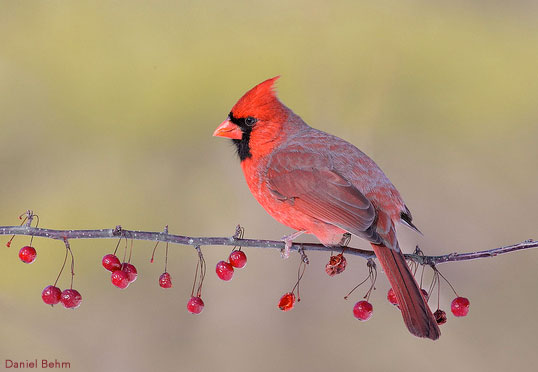 Photo ©
Daniel Behm
Photo ©
Daniel Behm
More on Cardinals
After last month’s NestWatch eNews article on Northern Cardinals, called “The Redder the Better,” was shared on the Cornell Lab of Ornithology’s Round Robin blog, we enjoyed hearing feedback from many readers new to NestWatch. Here are some of their questions that you might be wondering, too.
- “Do cardinals mate for life?” No, new pairs form during the breeding season, although some cardinals remain paired on the breeding territory all year. Pairs do get “divorced” within and between breeding seasons.
- “We’re all taught at an early age that bright coloring can also trick a predator into thinking something may be poisonous. Could that also be the case with cardinals?” Cardinals are not known to be poisonous, and most predators will readily take a cardinal if they can catch one. Scientific evidence points to the evolution of bright colors among birds primarily as a signal of mate quality.
- “Someone told me that cardinals will take over other birds’ nests and raise any eggs present as their own. Is this true?” Male cardinals occasionally feed nestlings or fledglings of other species, although not because they have taken over another bird’s nest. This may happen because another chick is begging nearby, and the birds might get confused. Another thing that happens quite often is that a Brown-headed Cowbird will lay one or more of its eggs in the cardinal’s nest. The cardinal cannot tell the difference and ends up raising the cowbird. In fact, cowbirds make no nests of their own and rely entirely on other species to raise their young. Many bird species, not just cardinals, are duped by the cowbird.
 Photo ©
Photo ©